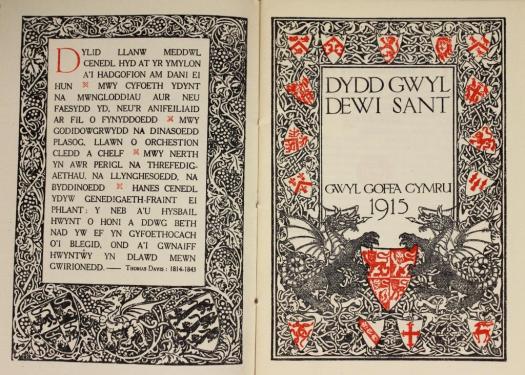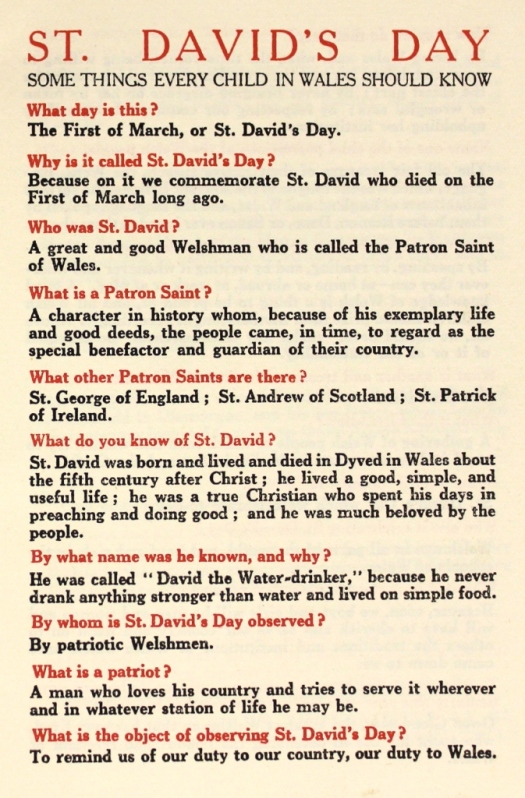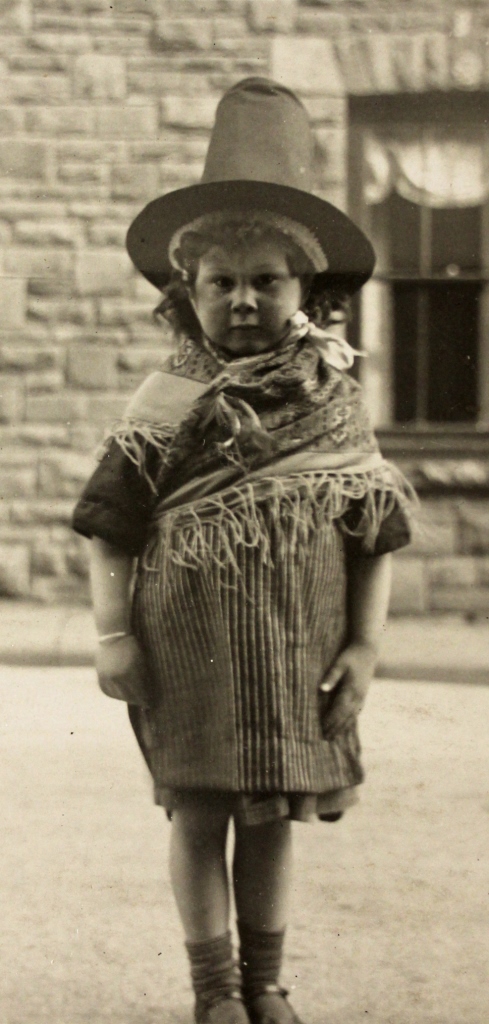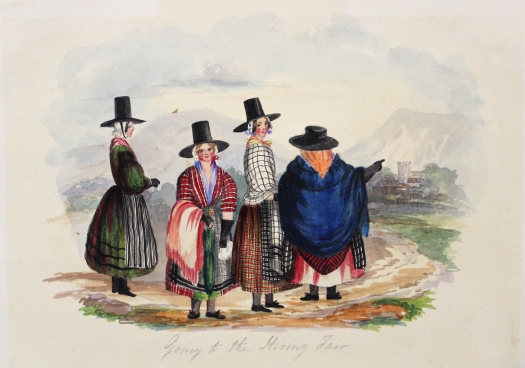On 1 March St David’s Day is celebrated in Wales, providing schools and communities with an opportunity to mark the occasion by holding parades, dressing in welsh national costume, singing and celebrating all things Welsh.
From head teachers’ entries in school log books (the head teacher’s diary of daily events in school) we can see that from at least the beginning of the twentieth century St David’s Day was an established part of the school calendar with the morning timetable revolving around lessons on the life of St David as well as singing competitions, recitals and often dramatic sketches on welsh history and folklore. In the afternoons the children were given a half day holiday.

Local education authorities even issued advice on what should be taught on St David’s Day, publishing pamphlets giving teachers a potted history of Wales and listing suitable patriotic songs to be sung. During the first world war education authorities were particularly keen for schools to celebrate the day and a 1915 leaflet from the Welsh Department of the Board of Education shows how the emphasis is on patriotism, serving one’s country and using the occasion to boost national morale (ref. GD/E/39/14,15).


Some local organisations arranged formal dinners to commemorate St David’s Day. The Cardiff Cymrodorion were one such group, welcoming the Prime Minister Stanley Baldwin as the quest of honour at a dinner held at Cardiff City Hall on 1 March 1927 (ref. D183/13,14). Entertainment was provided by the Herbert Ware Orchestra of Cardiff (advertised as winners at the Royal National Eisteddfod at Barry, Pontypool and Swansea), a harpist and the Cowbridge High School for Girls Choir. In 1928 the quest of honour was David Lloyd George and dinner was a grand affair with many courses, some welsh dishes such as cawl were served and one of the puddings was given a welsh twist ‘savarins a l’Ananas a la St David’!

Wearing the national costume of Wales is one of the ways in which the day is commemorated, especially by school children.

Glamorgan Archives has many prints and photographs showing ‘welsh ladies’ in costume. By the nineteenth century the costume had developed into the one which we are now familiar with, the tall stovepipe style hat, flannel skirts and shawl. It is an image which was used on tourist souvenirs from teacups, postcards to handkerchiefs! One of our Victorian scrapbooks (ref. 1989/164) has some beautiful watercolours of ladies in traditional welsh costume with the colours as vivid today as when they were first painted.


Dydd Gwyl Dewi Hapus from Glamorgan Archives!
